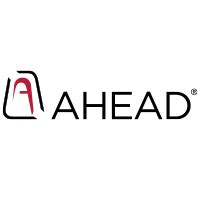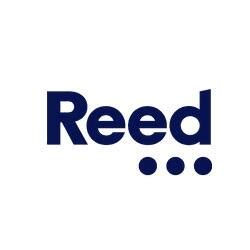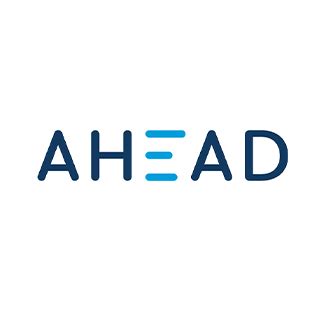Critical pedagogy offers a transformative approach to education, challenging traditional methods and encouraging a more engaged, equitable learning environment. Rooted in the works of influential theorists and educators, critical pedagogy emphasizes the importance of questioning established norms and addressing social injustices within the classroom. This article explores the evolution of critical pedagogy, delves into its core principles, and highlights the contributions of key figures who have shaped its development. We will examine practical strategies for implementing critical pedagogy in various educational settings, discuss the significance of dialogue and reflection, and address the power dynamics that influence learning. Additionally, we’ll consider case studies showcasing successful applications and tackle common challenges and criticisms associated with this progressive approach.
gameshoek.com invites you to explore this topic thoroughly.
1. Historical Background and Evolution of Critical Pedagogy
Critical pedagogy emerged in the late 20th century as a response to traditional, authoritarian teaching methods. Its roots can be traced back to the work of Paulo Freire, whose seminal book Pedagogy of the Oppressed (1970) laid the foundation for this transformative approach. Freire’s ideas challenged conventional education by advocating for a dialogue-based, student-centered pedagogy that empowers learners to question and critique societal norms. Influenced by Marxist theory and liberation theology, critical pedagogy emphasizes the importance of social justice, equity, and the role of education in fostering critical consciousness. Over time, the approach has evolved to incorporate diverse perspectives, including feminist, anti-racist, and postcolonial critiques, broadening its applicability across different educational contexts. This evolution reflects a growing recognition of the need for education that not only imparts knowledge but also addresses power imbalances and promotes social change.

2. Core Principles and Theories Underpinning Critical Pedagogy
Critical pedagogy is underpinned by several core principles and theories that collectively aim to transform the educational experience. Central to this approach is the concept of dialogue, which emphasizes the importance of open, respectful exchanges between teachers and students. This principle fosters a collaborative learning environment where students are encouraged to question and critically analyze societal norms. Another key principle is the focus on social justice, which seeks to address and rectify power imbalances within the classroom and broader society. The theory of conscientization, introduced by Paulo Freire, promotes developing critical consciousness among learners, helping them recognize and challenge oppressive structures. Additionally, critical pedagogy incorporates elements of cultural responsiveness, ensuring that diverse perspectives and experiences are valued and integrated into the learning process. Together, these principles aim to create a more equitable, reflective, and participatory educational experience.

3. Influential Figures and Pioneers in Critical Pedagogy
Several influential figures have shaped the development of critical pedagogy, each contributing unique perspectives and insights. Paulo Freire is perhaps the most pivotal pioneer, whose work Pedagogy of the Oppressed introduced key concepts like dialogical education and conscientization. Freire’s emphasis on the role of education in fostering critical consciousness and challenging social injustices laid the groundwork for modern critical pedagogy.
Another notable figure is Henry Giroux, who expanded on Freire’s ideas by exploring the role of education in promoting democratic values and addressing cultural and political issues. His work emphasizes the need for educators to be critical and reflective practitioners committed to social change.
Additionally, bell hooks has made significant contributions through her exploration of race, gender, and class in education. Her writings advocate for an inclusive pedagogy that recognizes the intersecting identities of students and the importance of creating a nurturing and equitable learning environment.
These pioneers, among others, have collectively advanced the field, enriching critical pedagogy with diverse theoretical and practical insights.

4. Critical Pedagogy in Diverse Educational Settings
Critical pedagogy can be applied effectively across various educational settings, each benefiting from its transformative principles. In primary and secondary education, critical pedagogy encourages students to actively engage in their learning by questioning traditional narratives and exploring diverse perspectives. This approach fosters critical thinking and empowers students to connect their personal experiences with broader social issues, creating a more inclusive and participatory classroom environment.
In higher education, critical pedagogy challenges students to interrogate established knowledge and engage in meaningful dialogue about societal structures. It promotes an education that goes beyond rote memorization, encouraging students to analyze and critique the power dynamics and ideologies that shape their disciplines.
Adult education and community-based learning also benefit from critical pedagogy by emphasizing practical, real-world applications of knowledge. This approach supports lifelong learning by addressing issues such as social justice, inequality, and community empowerment, encouraging learners to become active agents of change within their communities.
Moreover, in diverse cultural contexts, critical pedagogy adapts to respect and incorporate local traditions, languages, and values. By valuing diverse cultural perspectives and addressing systemic inequalities, critical pedagogy helps create educational experiences that are both relevant and transformative across different settings. This adaptability ensures that education remains a dynamic tool for social change and personal empowerment.

5. Implementing Critical Pedagogy: Practical Strategies for Educators
Implementing critical pedagogy in the classroom involves several practical strategies that foster a more engaged and reflective learning environment. First, educators should create a dialogue-rich atmosphere where students are encouraged to share their perspectives and question existing norms. This can be achieved through discussion-based activities, collaborative projects, and open-ended questions that promote critical thinking.
Another effective strategy is integrating real-world issues into the curriculum. By connecting academic content to current social, political, and cultural issues, educators help students see the relevance of their learning and understand its impact on society. This approach also supports the development of critical consciousness and social awareness.
Incorporating diverse perspectives and materials is crucial. Educators should select texts and resources that reflect a range of voices and experiences, ensuring that students encounter multiple viewpoints and develop a deeper understanding of different cultures and ideologies.
Finally, educators should model reflective practice. By regularly examining their own teaching methods and biases, teachers can continually improve their practice and better support their students’ learning and growth. These strategies collectively contribute to a more inclusive, equitable, and transformative educational experience.

6. The Role of Dialogue and Reflection in Critical Pedagogy
Dialogue and reflection are central to critical pedagogy, serving as fundamental mechanisms for fostering a transformative learning environment. Dialogue in critical pedagogy involves open, respectful conversations between educators and students, where diverse perspectives are valued and explored. This interactive approach encourages students to critically engage with the material and each other, challenging preconceived notions and deepening their understanding of complex social issues. Through dialogue, students develop critical thinking skills and become active participants in their learning process.
Reflection, on the other hand, allows both educators and students to examine their own beliefs, practices, and experiences. For educators, reflective practice involves evaluating teaching methods, considering the impact of their approach on students, and adjusting strategies to better align with critical pedagogy principles. For students, reflection involves critically analyzing their learning experiences, recognizing their own biases, and understanding how their perspectives influence their interpretation of the material.
Together, dialogue and reflection create a dynamic learning environment where continuous questioning, critical analysis, and personal growth are encouraged. This process not only enhances educational outcomes but also fosters a more equitable and socially just classroom atmosphere.

7. Addressing Power Dynamics and Social Justice in the Classroom
Addressing power dynamics and social justice in the classroom is a crucial aspect of critical pedagogy. Power dynamics refer to the ways in which power is distributed and experienced within educational settings, often affecting student participation and engagement. Educators can address these dynamics by creating a more democratic classroom environment where all voices are heard and valued. This includes recognizing and challenging their own biases, and fostering a space where students feel empowered to express their perspectives without fear of retribution.
Incorporating social justice into the curriculum involves addressing issues of inequality, discrimination, and systemic injustice. Educators should integrate topics related to social justice into lesson plans and encourage students to explore these issues critically. By examining historical and contemporary examples of injustice, students can develop a deeper understanding of the structures that perpetuate inequality and learn how to advocate for change.
Overall, by consciously addressing power dynamics and integrating social justice into their teaching, educators help create a more equitable and inclusive lea

8. Case Studies: Successful Applications of Critical Pedagogy
Case studies of successful applications of critical pedagogy illustrate its transformative potential in various educational contexts. For example, a high school in an urban area implemented a project-based learning curriculum focused on social justice issues. Students investigated local community problems, engaged in critical discussions, and proposed solutions. This approach not only enhanced their understanding of societal issues but also empowered them to take action within their community.
In a university setting, a professor incorporated critical pedagogy into a sociology course by using participatory research methods. Students collaborated with community organizations to address real-world issues, such as housing inequality and education reform. This method allowed students to apply theoretical knowledge to practical challenges while fostering a deeper commitment to social change.
These case studies demonstrate that when critical pedagogy is effectively integrated into educational practices, it can lead to meaningful learning experiences that engage students in addressing and resolving complex social issues.

9. Challenges and Criticisms of Critical Pedagogy and How to Overcome Them
Critical pedagogy, while impactful, faces several challenges and criticisms. One major challenge is resistance from traditional educational structures that may view critical pedagogy as disruptive or controversial. To overcome this, educators can advocate for the benefits of critical pedagogy through evidence of its positive outcomes and seek to build support from colleagues and administrators.
Another criticism is the perceived difficulty in implementing critical pedagogy in standardized testing environments, where curricula are often rigid. Educators can address this by integrating critical pedagogy principles into existing frameworks, demonstrating how it can enhance student engagement and learning without compromising academic standards.
Additionally, there may be challenges in addressing deeply ingrained biases and power dynamics. Continuous professional development and self-reflection can help educators recognize and mitigate their own biases, creating a more inclusive and equitable classroom. By addressing these challenges proactively, educators can effectively implement critical pedagogy and contribute to a more just and transformative educational experience.

Critical pedagogy offers a powerful framework for transforming education through dialogue, reflection, and a focus on social justice. By embracing its principles and addressing its challenges, educators can foster a more inclusive and dynamic learning environment that empowers students and promotes meaningful engagement with societal issues.
gameshoek.com
